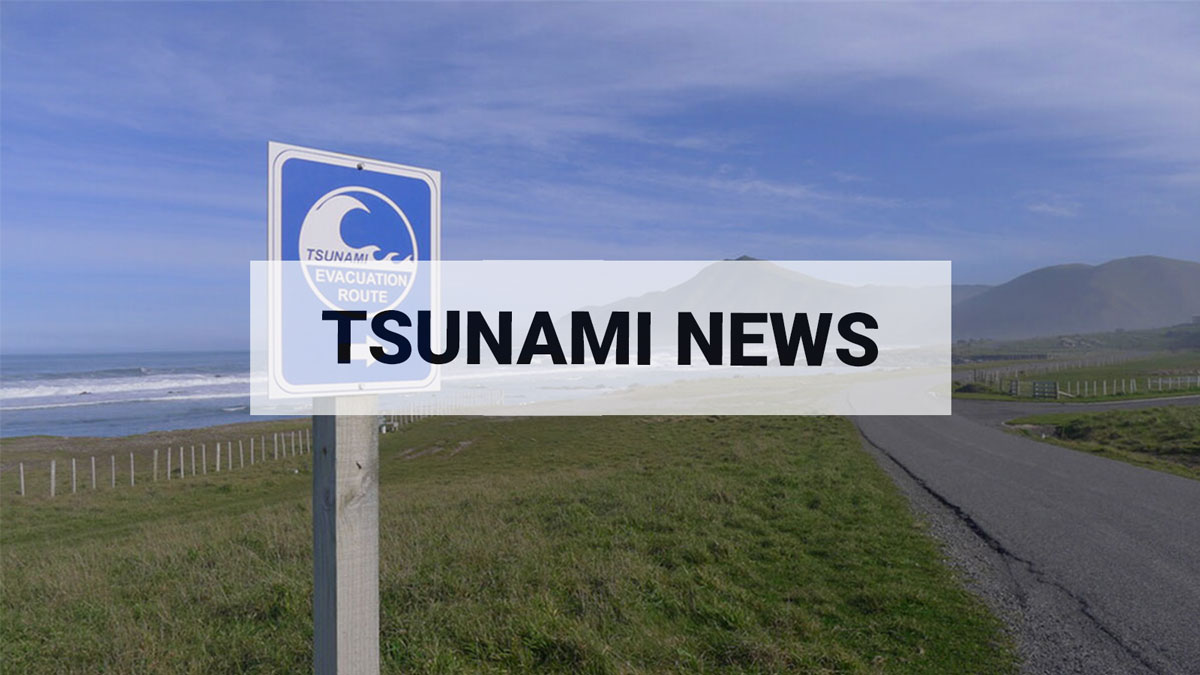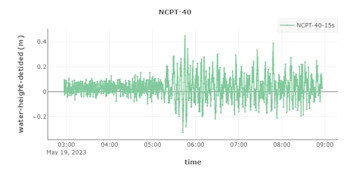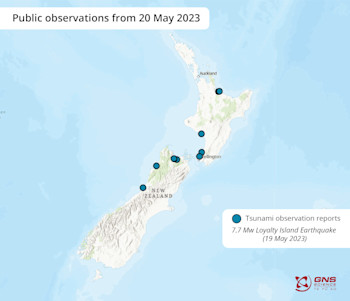
Loyalty Island Earthquake and Aotearoa’s experience of the tsunami
At around 3pm NZDT on Friday 19 May, a M7.7 earthquake occurred about 400 km to the east of Loyalty Islands (800 km south-west of Fiji) causing small tsunami on coasts around the south-west Pacific, and strong currents and surges for New Zealand.
The earthquake occurred at the southern end of the plate boundary where the Australian plate subducts beneath the Pacific, a highly seismically active area that hosted similar magnitude events in 2021. Friday’s quake likely occurred on a normal fault in the outer rise of the subduction zone, making it a different tsunami-generating scenario to the large subduction zone events we’re more familiar with (e.g., 2004 Sumatra, 2011 Tōhoku-Oki).
Using data from New Zealand’s DART (Deep-ocean Assessment and Reporting of Tsunamis) network , allowed us to track the tsunami activity, with the sensor closest to the earthquake source first detecting waves at around 4:25pm (Fig one). From the data, the science team was able to forecast the likely direction of travel and impact of the tsunami waves.
We first detected waves reaching our shores on our coastal tsunami gauges at around 5:15pm (Fig two), and continued to monitor them for four hours, after which time the waves had abated. In Northland the waves coincided with mid- to high-tide levels, and the effects of offshore thunderstorms, all contributing to strong currents and surges in the area.
A second M7.1 event occurring around 1pm on Saturday 20 May was too small to pose a tsunami threat to New Zealand – a forecast that was confirmed through analysis of the tsunami wave signals picked up by the DART sensors and coastal gauges.
View an animation of the 19 May 2023 Loyalty Islands Tsunami below:
Public Observations
On Saturday 20 May, we invited New Zealanders to share their observations of the tsunami/wave activity by completing our Social Scientists’ survey. Within 24 hours, we had received 10 responses from across the country.
One person in Manawatu-Whanganui said they did not see, hear, or feel anything unusual while the remaining nine responses from the West Coast, Nelson-Tasman, Wellington, and Bay of Plenty regions indicated that people had observed the water recede and rise, and heard unusual sounds. Some people provided additional information, including:
“Extremely high tide, over into the dunes” in Nelson
“Normally you can see the sand, now the water is splashing up on the rock” in Mapua
“Unusual surges 80’ past high tide” in Paraparaumu
“Waves splashing on to footpath” in Tauranga
Due to the concurrent storm and high tide that occurred in tandem with this event in some regions, it is difficult to attribute all of the coastal impacts and wave activity to the tsunami.
Public observations help GNS Science to rapidly understand how the tsunami may have affected New Zealanders and the coastline. Even from a relatively small sample of data, we can see that wave activity was observed along parts of the New Zealand coast.
We welcome the opportunity for New Zealanders to share their valuable experiences with us, once they are in a safe location. Always remember ‘Long or Strong, Get Gone’ and follow the advice from your civil defence and emergency management groups. We will use publicly sourced information to help guide our messaging for future events. If you remember seeing anything unusual last weekend after the tsunami, please feel free to complete our survey here: Tsunami Observation Report
Reminder
The National Emergency Management Agency (NEMA) will be conducting its annual nationwide test of the Emergency Mobile Alert (EMA) between 6pm and 7pm this Sunday evening. Emergency Mobile Alert is an information channel for alerting people to threats to their life, health or property. In an emergency, an alert can be sent to targeted areas affected by serious hazards. The nationwide test is a way to check the EMA system, the cell towers and your phone’s ability to receive an alert, ensuring the system will perform as it should in an emergency.
Know what to do?
Only messages issued by the National Emergency Management Agency represent an official warning status for New Zealand. Go here for the latest NEMA updates. For a local-source tsunami which can arrive in minutes, there is not enough time for an official warning, it is important to recognise the natural warning signs and act quickly. Remember, LONG or STRONG, GET GONE.
If there is earthquake shaking, drop, cover and hold. Protect yourself from the earthquake first, then act as soon as the shaking stops.
If you are near the coast and experience any of the following:
Feel a strong earthquake that makes it hard to stand up, or a weak rolling earthquake that lasts a minute or more.
See a sudden rise or fall in water level.
Hear loud and unusual noises from the water.
Move immediately to the nearest high ground or as far inland as you can, out of tsunami evacuation zones. Do not wait for official warnings.
Once you have evacuated, follow official advice from your local Civil Defence Emergency Management Group about when it is safe to return to tsunami evacuation zones. Do not return until an official all-clear message is given by Civil Defence Emergency Management.
Want to get prepared?
NEMA has a great website with information on what to do before, during and after a tsunami. You can also search your address to find out if it is in a tsunami evacuation zone.
Prepare your home. Protect your whānau.
There’s a lot we can do to make our homes safer and stronger for earthquakes. Toka Tū Ake EQC’s website has key steps to get you started.
Media Contact: 021 574541 or media@gns.cri.nz





